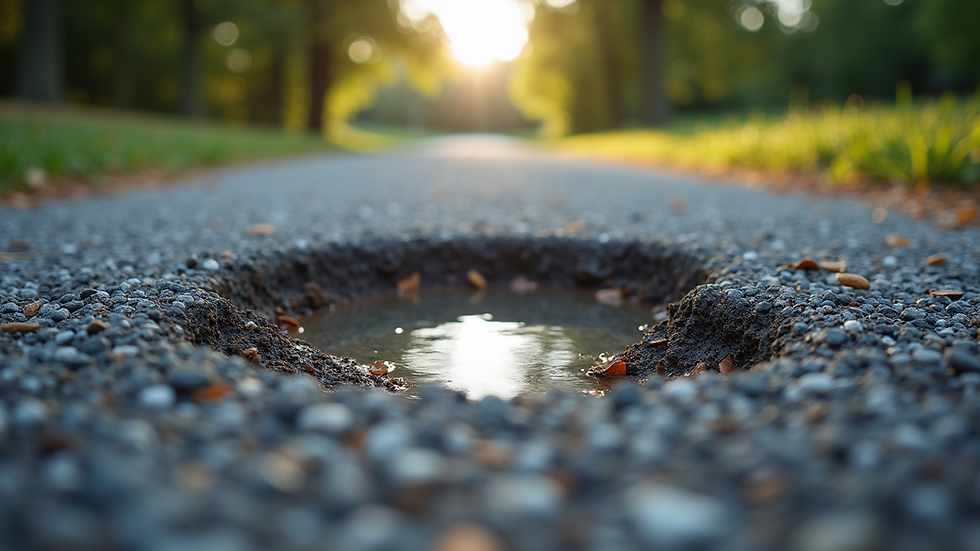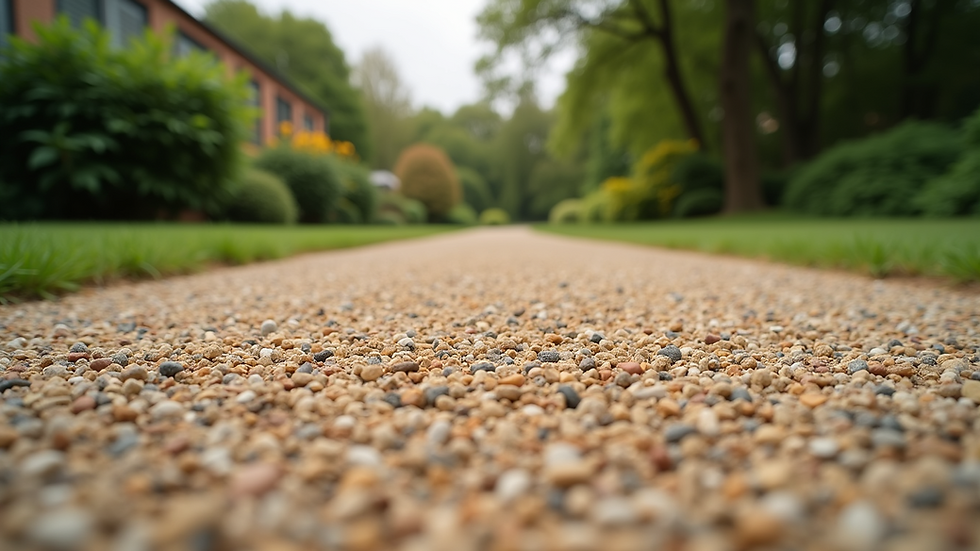Emergency Gravel Driveway Repair: Quick Solutions
- mpd18049
- Sep 24
- 4 min read
Gravel driveways are a popular choice for many homeowners. They are affordable, easy to install, and can add charm to your property. However, they can also suffer from wear and tear over time. Whether it’s due to heavy rain, snow, or just regular use, you may find yourself facing an emergency gravel driveway repair situation.
In this post, we will explore quick solutions to help you get your driveway back in shape. You don’t need to be a professional to tackle these repairs. With a little guidance, you can restore your driveway quickly and effectively.
Understanding Common Issues
Before diving into repairs, it’s essential to understand the common issues that can affect gravel driveways. Here are a few problems you might encounter:
Potholes: These are depressions that form when the gravel is displaced. They can be caused by water erosion or heavy traffic.
Ruts: Ruts are grooves that develop from repeated vehicle use. They can make your driveway look uneven and can lead to further erosion.
Washouts: Heavy rain can wash away gravel, leaving bare spots. This can create a bumpy surface and make your driveway less stable.
Recognizing these issues early can help you address them before they become more significant problems.
Quick Fixes for Potholes
Potholes can be a nuisance, but they are relatively easy to fix. Here’s a step-by-step guide to repairing potholes in your gravel driveway:
Clear the Area: Start by removing any loose gravel and debris from the pothole. Use a shovel to dig out the damaged area until you reach solid ground.
Shape the Hole: Make the sides of the hole sloped. This will help prevent water from pooling in the pothole.
Fill with Gravel: Add fresh gravel to the hole. Make sure to overfill it slightly, as the gravel will settle over time.
Compact the Gravel: Use a tamper or a heavy object to compact the gravel. This will help create a solid surface.
Smooth the Surface: Finally, use a rake to smooth the surface of the repaired area.
By following these steps, you can quickly restore your driveway and prevent further damage.
Tackling Ruts
Ruts can make your driveway look unkempt. Here’s how to fix them:
Identify the Ruts: Walk along your driveway and mark the areas that need attention.
Remove Loose Gravel: Use a shovel to remove any loose gravel from the ruts.
Add Fresh Gravel: Fill the ruts with fresh gravel, making sure to slightly overfill.
Compact the Area: Use a tamper to compact the gravel, ensuring it is level with the surrounding surface.
Rake the Surface: Smooth out the area with a rake to blend it in with the rest of the driveway.
Regular maintenance can help prevent ruts from forming in the first place.
Fixing Washouts
Washouts can be more challenging to repair, but with the right approach, you can restore your driveway. Here’s what to do:
Assess the Damage: Determine how much gravel has been washed away and the extent of the damage.
Rebuild the Base: If the washout is significant, you may need to rebuild the base. Add a layer of larger stones to create a stable foundation.
Add Gravel: Once the base is secure, fill in the area with fresh gravel.
Compact the Gravel: Use a tamper to compact the new gravel, ensuring it is level with the surrounding area.
Create a Drainage Solution: To prevent future washouts, consider adding drainage solutions like ditches or culverts to redirect water away from your driveway.
By addressing washouts promptly, you can maintain the integrity of your driveway.
Preventative Measures
While quick fixes are essential, prevention is key to maintaining your gravel driveway. Here are some tips to keep your driveway in good shape:
Regular Raking: Rake your driveway regularly to redistribute gravel and fill in low spots.
Proper Drainage: Ensure that water drains away from your driveway. This can help prevent washouts and erosion.
Limit Heavy Traffic: If possible, limit the weight of vehicles using your driveway. Heavy vehicles can cause more damage over time.
Add Edging: Consider adding edging to your driveway. This can help keep gravel in place and prevent it from spreading.
By taking these preventative measures, you can extend the life of your gravel driveway.
When to Call a Professional
While many repairs can be done by homeowners, there are times when it’s best to call in a professional. If you notice significant erosion, large washouts, or if your driveway is sinking, it may be time to seek help. Professionals have the tools and expertise to handle more extensive repairs.
Conclusion: Keep Your Driveway in Top Shape
Maintaining a gravel driveway doesn’t have to be a daunting task. With quick fixes and regular maintenance, you can keep your driveway looking great. Remember to address issues as they arise and take preventative measures to avoid future problems.
By following the tips outlined in this post, you can ensure that your gravel driveway remains a beautiful and functional part of your home for years to come.



Comments